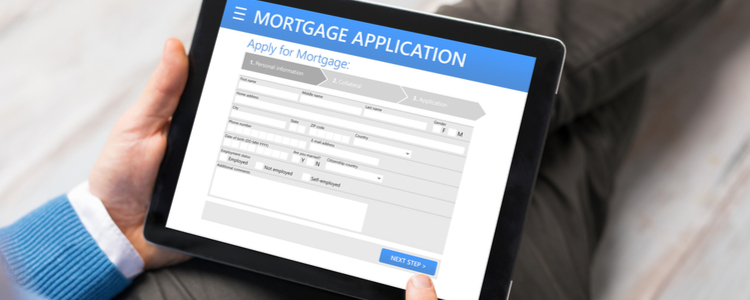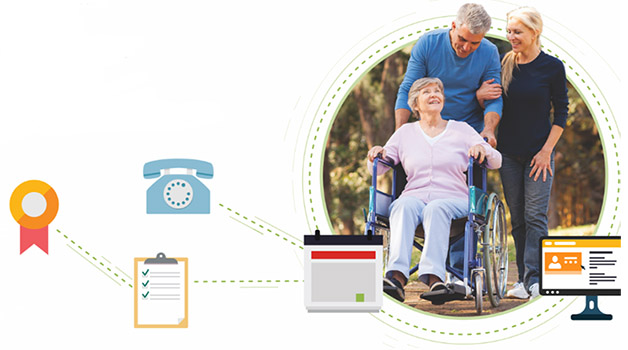Find consumer tips on everything from credit to home safety to travelling on a budget and so much more!
What If Your Landlord Won’t Return Your Deposit?
You’re counting on getting your entire security deposit back when you move out of a rental. After all, you cleaned the place thoroughly and were a responsible tenant. However, your landlord may see things differently and want to keep some, or all, of the money.
Perhaps there was damage you didn’t notice, or you didn’t clean as thoroughly as you thought, or you didn’t fully pay the last month’s bills. Fair enough, the security deposit is there to help offset these costs.
But what if you did everything right and the landlord still won’t return your money? That’s when issues can arise. Here’s what you need to do.
Know Your Rights as a Tenant
Rental laws can vary depending on your city, county, and state. You should check your local laws to find out what rights you have as a tenant.
The U.S. Department of Housing and Urban Development has a directory with links to tenant rights websites for each state and some cities. Your local city government may also have a housing department with additional resources, and there could be nonprofit tenants unions or housing advocacy groups in your area that can help explain relevant rental laws.
Depending on the applicable laws, your landlord may have several weeks to inspect the property and return your security deposit. Landlords that don’t return a full deposit may have to give you an itemized list of how they’re using the money (e.g., to pay for a cleaning service, repair damages, etc.) or forfeit their right to the security deposit.
Generally, you won’t be responsible for normal wear and tear on the property or the appliances. However, if you caused damage to the property, left it less clean than when you moved in, took keys or appliances, or moved out without proper notice, the landlord may be able to keep money to offset the associated costs for repairs, cleaning, replacements, and lost rental income. Also, be sure to give your landlord a forward address where the security deposit can be sent.
Options for Dealing with a Reluctant Landlord
If your landlord is refusing to repay part or all of your security deposit and you think you’re in the right, you may want to start by contacting your landlord. A friendly discussion might help clarify why the landlord felt justified keeping the money, why you think that shouldn’t be the case, and lead to a mutually agreeable conclusion. If it doesn’t, here are a few other actions you could take:
File a Claim in Small Claims Court
You don’t need to hire an attorney to represent you in small claims court. However, you may need to send a demand letter before you can sue and there could be a small filing fee.
Bring all your evidence and records for the judge to review, including the lease, demand letters, correspondence, photos, and even a witness who can testify about the condition of the home when you moved in and out. Hopefully, the judge will rule in your favor and order the repayment of your security deposit. In some areas, a judge may even be able to award you more than the initial security deposit amount.
Hire an Attorney
If you don’t feel comfortable representing your case in small claims court or feel that the specifics of a case may require an expert understanding of the law, you could hire an attorney who is familiar with your local rental laws. You may be able to find pro bono (i.e., free) legal aid. Or, you might be able to hire an attorney on contingency, and the attorney will only get paid if you win your case. Depending on the case, the opposing side may have to pay your attorney fees.
Having to deal with demand letters and the courts could resolve your issue, but it isn’t an ideal situation. You may be able to prepare ahead and avoid having to deal with the legal system.
Four Steps to Avoid a Confrontation Later
As is often the case, preventative care can be easier than fixing an emergency later. Here are a few steps you can take when you move into a new place could help you avoid security deposit issues.
Do a Walkthrough with Your Landlord Before Moving In
Ask the landlord to review the home with you and make a note of any damages and its current state of cleanliness. Take pictures of anything you find, or even take a video as you walk through the home. You could add notes to the lease about specific damages and ask the landlord to agree with your assessment before signing the lease. Or, you may want to print a separate checklist for you and the landlord to sign.
Review Your Lease Terms
The lease should clearly outline how much the security deposit will be and when it will be returned.
Clean the Home and Repair Any Damages
If you leave the home a complete mess with holes in the walls, grime-covered floors, or abandoned belongings, the landlord is in the right to keep at least part of the security deposit to restore the home to its former condition. Clean and repair any mess or damage you cause, or hire someone to do the work for you before moving out.
Do Another Walkthrough When You Move Out
Just as you did before moving in, ask the landlord to do a final inspection with you. Take pictures or a video showing the condition of the home and ask the landlord to sign a move-out checklist. You could try to schedule the walkthrough for a day or two before your official move-out date, giving you time to do last-minute repairs and cleaning.
Whether you’re moving out of your first apartment or just bought a home and are going from renter to owner, getting your security deposit back can make the transition much easier.
There are a few preventative measures you can take to help ensure you’ll receive the correct amount back. If you think you’ve been wronged and aren’t receiving as much money back as you should, you can start with a friendly discussion with the landlord. When that doesn’t work, there are legal steps you can take that could help force the repayment of the security deposit.
Article written by Louis DeNicola. Louis is a personal finance writer with a passion for sharing advice on credit and how to save money.

You paid a deposit when you moved in, but now you're moving out and your landlord won't return your money. Follow these tips to help you get your deposit back.
Financial Planning for Home Ownership
Start the foundation of your plan by figuring out how much you can afford to spend on a new home. You'll find plenty of tools out there to help you, like affordability or monthly payment calculators. There are several different factors involved with the affordability equation — including some immediate up-front costs, regular monthly payments and the ongoing expenses associated with homeownership. This article explores these factors to help you prepare accordingly.
Get off to a Good Start
One of the biggest out-of-pocket expenses you'll need to plan for is your down payment – the part of your property purchase price paid in cash and not financed with a mortgage. The more up-front money you can put down, the less you will pay each month for your mortgage.
The minimum required down payment depends on the mortgage program you select. In general, at least 3.5% of the sale price is required for an FHA or VA mortgage. If you put down less than 20% on a conventional loan, you may need private mortgage insurance — which would add to your monthly payments. When it comes to FHA loans, in addition to lower down payments they typically feature higher qualifying ratios than most conventional mortgages.
Don't forget that you will also need cash for the closing costs, which cover expenses that complete the transfer of ownership, such as an origination fee, attorney's fee, initial escrow payments and the costs of obtaining title insurance and a survey. Closing costs are typically based on the home price and vary according to location.
Prepare for the Long Haul
Unless you are paying for your home in cash, your financial plan will need to account for a mortgage payment for a term of your choosing — most likely 15 or 30 years. Your payments are based on both the principal (the amount of the loan) and interest (the amount you pay to borrow money, calculated as a percentage of the amount borrowed).
Payments may also include money held in escrow for property taxes and homeowners’ insurance. You can find out property tax information from the home's seller or your real estate agent and confirm it with the recording office in the county where your home is located. Property taxes are reassessed regularly, so this amount may change.
As for your homeowners’ insurance policy, your lender requires the policy to cover the cost to rebuild the home. The insured amount may be higher or lower than the actual purchase price, and your insurance company can give you an estimate based on specific property information.
No financial plan would be complete without full consideration of the "extra" costs of homeownership beyond your mortgage: utility bills, homeowners’ association dues and routine maintenance all come into play.
Remember the Benefits
It's easy to get overwhelmed by all the costs associated with your home. Try to keep in mind that owning a home also increases your assets, which can open up opportunities for other investments. Once you’re a homeowner, you may be able to use your home’s equity as a secure line of credit for future purchases. In addition, you may be able to deduct your mortgage interest, real estate property taxes and discount points. Consult with a tax advisor for details specific to your situation.
When you are ready to buy a home, contact Union Plus Mortgage Company to talk to a loan officer at 855-864-6653 or visit us online.

The AFL-CIO, Union Privilege and a group of unions own Union Plus Mortgage Company and will benefit if you get your loan through the company. However, you are not required to use Union Plus Mortgage for your loan and are free to shop. For your Affiliated Business Arrangement Disclosure Statement, please visit www.unionplusmortgage.com.
Union Plus Mortgage Company has a services agreement with Union Privilege in which Union Privilege receives a financial benefit for providing agreed upon services. The NMLS Consumer Access Website is: http://nmlsconsumeraccess.org.
NMLS Number 1561829
![]()

How much money will you need to buy your home now and maintain it into the future? Whether you’ve already started hunting or you're just now considering making the move to home ownership, you’ll need to get your financial house in order first to put yourself in a positive position.
'Tis the Season of Wireless Savings
-
Get a $400 credit when you buy LG V40 ThinQ™1
And trade in an eligible smartphone.
Limited Time. Req's elig. service (min. $60/mo. before discounts). Value via instant credit or promo card (valid min. 90 days). $30 activation, other fees, & restr's apply. See offer details below. -
Save up to $80 on Ultimate Ears Wi-Fi speakers2
Ends 1/3/19. Req's apply. See $80 details below.
-
Get up to $60 in credits when you buy the Samsung Galaxy watch3
See Samsung Galaxy watch details below.
Plus, with the AT&T Signature Program, union members can deck the holidays with exclusive savings on wireless — making for a happy holiday indeed.

1$400 TRADE-IN OFFER: Limited Time Offer. Online and select locations only. Elig. Devices: Must buy a new LG V35/V40/G6 Duo. Elig. Service: Postpaid svc (voice & data) is req'd (min. $50/mo. for new svc with AutoPay and paperless bill discount. Pay $60/mo. until discount starts within 2 bills. Existing customers can add to elig. current plans which may be less). Elig. Trade-In: Trade-in must be in good working condition. Req's min. $20 trade-in value & meet AT&T Trade-In Program reqmts. Must trade in elig. smartphone at a participating location and complete trade-in within 14 days from the receipt of new phone. If new phone purchased between November 23, 2018 and December 18, 2018, trade-in may be completed on or prior to January 2, 2019. This is not an early upgrade program. If purchase at att.com, will get an email after purchase with promotion code necessary to use during online trade-in in order to get the promotional $400 value. Promo code must be used within 14 days, or if new phone purchased between November 23, 2018 and December 18, 2018, on or prior to January 2, 2019. Credit/Promotion Card: In AT&T-owned retail stores, you will receive an instant credit. For online trade-in, must use promotion code and will get a promotion card within 3 weeks after complete trade-in of an eligible device. The card is a Private Label AT&T Promotion Card ("Card") issued by MetaBank™ or CenterState Bank of Florida NA, via a license from Visa U.S.A. Inc. Instant credit & Card may only be used for AT&T products & svc in AT&T owned retail stores, at att.com, or to pay wireless bill. Card expiration date not less than 90 days from receipt. Dealers: Participating dealers provide savings for use at time of trade-in or a dealer promo card. Dealer cards contain add'l terms & conditions & may only be used at specified dealer. Other Obligations: Trade-in does not relieve obligations under AT&T Next or other AT&T Return and Exchange programs including recently-purchased device returns, Warranty, or Extended Warranty. Devices to be returned through these AT&T programs should not be traded in via this offer. Limit: One trade-in per qual. purchase. Visit a participating store or [att.com/tradein] to learn more.
GEN. WIRELESS SVC: Subj. to Wireless Customer Agmt (att.com/wca). Credit approval req'd. Deposit: may apply. Limits: Purch. & line limits apply. Activation/Upgrade: $30 Fee. Credit approval, taxes, fees, monthly, other charges, usage, speed, coverage & other restr's apply. See att.com/additionalcharges for details on fees & charges. Promotion, terms, & restr's subject to change & may be modified or terminated at any time without notice. International and domestic off-net data may be at 2G speeds. AT&T service is subject to AT&T network management policies. See att.com/broadbandinfo for details..
2Ends 1/3/19. Eligible Devices: UE BLAST ($70 discount), UE MEGABLAST ($80 discount). Not combinable with certain offers/discounts/credits. Return: within 14 days. Restocking fee: 10% of purch. price over $200. Limit 4 per customer. Subject to change. Restrictions apply.
3Get up to $60 in credits when you buy the Samsung Galaxy Watch
Must activate & maintain svc on eligible smartwatch (min. $10/mo.) and add to eligible wireless svc on compatible Android 5.0+ phone (min. $50/mo. for new service after AutoPay & Paperless billing discount that starts w/in 2 bills). Req’s AT&T NumberSync®.
*Limited time offer. Get up to two credits w/in 3 bills ($30/service + up to $30 activation). Taxes, other charges & restr’s apply. Messaging restr’s apply.
*Up to $60 Credit: Limited time offer. Must purchase eligible device/have eligible devices and activate with eligible service. Eligible Devices: Requires (i) new Samsung Galaxy Watch + Cellular purchase at full price or on installment agreement and (ii) Android 5.0 smartphone or newer with 1.5GB RAM or above. Eligible Service: Both Galaxy Watch and smartphone must be on same account with postpaid wireless voice & data services. (i) Galaxy Watch requires min. $10/mo. when added to eligible shared plan; (ii) Smartphone requires min. $50/mo. for new svc with autopay and paperless bill discounts. Pay $60/mo. until discounts start w/in 2 bills. Bill Credit: Account and service on your line must remain active 30 days to get up to two credits ($30 service + up to $30 activation) w/in 3 bills. No activation credit if already waived. Offer Limits: Max. of 1 activation credit/waiver per device. One service credit offer per eligible Samsung Galaxy Watch activation. May not be combinable with other offers, discounts, or credits. Device Limits: Galaxy Watch requires AT&T NumberSync to access the AT&T cellular network. For SMS/MMS messaging, the synced Smartphone must be on and connected to the AT&T network (via cellular or Wi-Fi connection; if using Wi-Fi connection, smartphone must have Wi-Fi calling activated). See www.att.com/numbersync for details. Usage charges apply. Activation/Upgrade: Up to $45 fee may apply. Return: w/in 14 days. Restocking fee up to $45. Other restrictions apply.
GEN. WIRELESS SVC: Subj. to Wireless Customer Agmt (att.com/wca). Deposit: May apply. Limits: Line limits apply. Prices may vary by location. Taxes, fees, monthly, other charges, usage, speed, coverage & other restr's apply. See att.com/additionalcharges for details on fees & charges. International and domestic off-net data may be at 2G speeds. AT&T service is subject to AT&T network management policies. See att.com/broadbandinfo for details.
Promotions, terms & restr’s subject to change & may be modified or terminated at any time without notice.

Looking for gift ideas this holiday season? AT&T has you covered with wireless deals to make shopping for everyone on your list a lot easier.
Seven Thanksgiving Foods That are Bad for Cats and Dogs
Thanksgiving is around the corner and that means it's time to feast. However, many popular dishes aren’t safe for pets to consume. It’s important to know which foods are bad for dogs and cats.
Here are seven Thanksgiving food items to keep away from our four-legged friends:
- Stuffing
Thanksgiving dressing is often made with onions, scallions or garlic. These ingredients, however, are extremely toxic to dogs and cats and can cause a life-threatening anemia (destruction of the red blood cells). It’s best to avoid feeding any amount of stuffing to pets.
- Ham
Ham and other pork products can cause pancreatitis, upset stomach, vomiting and diarrhea. Pork is also high in fat, which can lead to obesity in pets. Even a small amount of ham can contribute a very large amount of calories to a small dog or cat's diet.
- Turkey Bones
Bones can cause severe indigestion in dogs and cats, potentially causing vomiting and obstructing the bowel. Bones may also splinter and cause damage to the inside of the stomach and intestines. In some cases, turkey bones may even puncture through the stomach and cause a potentially fatal abdominal infection.
- Dairy Products
Foods that contain butter or milk can cause diarrhea in lactose intolerant pets, such as mash potatoes, cheesecake, and buttermilk biscuits.
- Spices
Some recipes that call for onion powder or garlic are very toxic to pets, including green bean casserole and gravy.
- Salads with Grapes/Raisins
There are many salads served at Thanksgiving that include grapes or raisins as an ingredient — from fruit salad, to waldorf salad, to ambrosia. However, grapes and raisins are very virulent and potentially deadly. Grapes can cause severe, irreversible and sometimes fatal kidney failure in dogs. Be sure to keep all dishes that include grapes and raisins away from pets.
- Chocolate Desserts
While pumpkin pie is the most famous Thanksgiving dessert (canned pumpkin also has many pet health benefits), many people offer a variety of chocolate desserts at Thanksgiving. Chocolate is toxic to dogs and cats, yet dogs love the smell and taste of it. The darker the chocolate, the more toxic it is. Keep all chocolate desserts out of the reach of pets to prevent an emergency trip to the veterinarian.
Also, don't forget to inform your dinner guests about these seven food items, so they don’t feed them to your cat or dog. If they do eat any of these foods, be sure to call your veterinarian immediately. The most important part of holiday pet safety is early action, which may prevent more costly and serious complications from developing.
With Union Plus Pet Health Insurance, Accident Only1 plans are only $6/month for cats and $9/month for dogs. If you’d like to include illness coverage, there are comprehensive BestBenefit Accident and Illness plans2 available.

This original article was written by Dr. Eva Evans, a veterinarian and writer for pet health insurance agency, Pets Best. Since 2005, Pets Best has been offering pet health insurance plans to dogs and cats across the U.S.
Based on Pets Best claims data from 2015, 2016, and 2017.
1Accident Only Plans are $9/mo for dogs and $6/mo for cats. In WA state: the Accident Plan is $10/mo for dogs and $7/mo for cats.
25% Group Discount plus 5% Weblink Discount applies to BestBenefit plans; Group Discount not available in AK, HI, or TN; Weblink Discount applies to first policy term only; not available in AK, FL, HI, or TN. Additional 5% discount applied if insuring more than one pet. Maximum allowable discount is 12%.
Pet insurance coverage is offered and administered by Pets Best Insurance Services, LLC and is underwritten by American Pet Insurance Company, a New York insurance company.

It's only natural to want to share our Thanksgiving feast with our four-legged friends, but some foods can be downright dangerous for them. Keep them away from these seven food items so they can have a healthy and safe Thanksgiving!
Eight Ways to Help Your Neighborhood
Tired of looking at unkempt foreclosures in your area? Learn how to save your block without putting yourself or your property at risk.
An empty home has more issues than poor curb appeal. Kids may go exploring in and around these homes, risking injury. And as time passes, the properties also can attract wild animals and/or vandals — putting the whole neighborhood at risk.
"Virtually every city in America is touched by this problem," says Daniel Kildee, president of the Center for Community Progress, a nonprofit that partners with local governments to address abandoned property issues.
Things Homeowners Can Do
- Work With Your Neighborhood Organization
A collective voice, like that of a neighborhood organization, is louder and more effective than a single one, especially when it’s asking a local government or mortgage company to take action. “Neighborhood organizations promote a sense of community and get people talking to each other about what’s going on in the neighborhood,” says Kildee.
The neighborhood crime watch concept is one model of a group focused on monitoring and maintaining vacant properties. Learn more about watch programs from the National Neighborhood Watch program.
- Notice the Warning Signs
- Neighbors are often the first to notice the subtle signs of a vacancy, such as:
- Piles of mail and fliers
- Overgrown grass and landscaping
- Odd or unpleasant odors
- Graffiti
- Animals living under porches
- Strangers hanging around
- “It’s not a bad thing for neighbors to be nosy about these things,” says Kildee. “It’s going to have a negative effect on everyone if something isn’t done.”
- Be Diligent About Protecting Your Home
Neglected properties attract crime and are fire hazards. According to the U.S. Fire Administration, 7% of residential fires are in vacant buildings. Protect your own home by keeping doors and vehicles locked, installing motion lights and making sure smoke alarms are in working order.
- Determine the Owner of Record
To ensure property maintenance, contact the person or agency responsible for the vacant home. If the property is up for sale, identify the owner or the real estate agent. Or, if it’s in foreclosure, call the mortgage company that holds the title.
The city or county recorder or assessor will have records of property ownership. “It is important to identify vacant properties as soon as possible so they can be monitored,” says Kildee. “Sometimes the owner is going to be more vigilant if they know somebody is paying attention.
- Call the Authorities
If you see anything that seems suspicious or potentially dangerous, call the police. “Pay attention, and don’t be afraid to act,” says Kildee.
- Know the Local Regulations
Cities have public nuisance regulations and laws addressing property maintenance. Some require owners to register their vacant properties and pay an annual fee that can range from a few hundred to several thousand dollars. The fees help cover any government costs to care for a property, while encouraging the owner to rehabilitate or sell the property.
“You’d think an empty building would require less public service, but it’s the opposite,” says Kildee. “Police and fire departments, as well as building code inspectors, are regularly called to vacant properties.” Brush up on local laws through your local government’s website or your elected city representative.
- Do it Yourself … But Only as a Last Resort
If a property owner or city won’t address maintenance issues such as mowing the lawn or clearing snow, your neighborhood organization may need to. “Do what you can through the owner or local government, but don’t wait for something bad to happen,” says Kildee.
However, don’t take action until you have exhausted efforts to get the owner of record or the city to respond. Getting written permission from the owner is one way to protect yourself. “In extreme cases, some communities allow you to go to court to be appointed receiver of property just for maintenance,” says Kildee.
Union Plus offers special discounts on auto insurance from MetLife Auto & Home®.
Learn more about
Union Plus Auto and Home Insurance


Homeowners can take steps to combat reduced property values due to unkempt foreclosures. Protect your neighborhood by being proactive and vigilant.
Avoid These Common Holiday Season Money Mistakes
The holiday season is one of the most stressful and challenging times of the year when it comes to money. With gifts and decorations to buy, large meals to plan, travel, and events there always seems to be something to spend money on.
This year, avoid debt by avoiding these common holiday season money mistakes.
Not Planning
Impulse purchases are more common at this time of year than any other. You see “just a little something” that a friend or family member might like and you want to add it to your gift giving list. Or, you’re drawn in by all the great holiday sales and purchase things you want for yourself.
At this time of year, you need a budget. Know what you can afford to spend, without using credit, and limit yourself to that amount. Create a special holiday budget that includes the gifts you want to give, the parties you want to throw, and the events you want to attend. Limit your budget to the amount you have pre-determined you can afford.
Forgetting the Extras
When planning your budget, don’t forget the things most people don’t budget for. This includes greeting cards, postage, wrapping paper, décor, and higher electric bills for all your holiday lights.
Not Shopping Around
A good deal is only a good deal if it fits your budget AND it’s something from your list. Before heading out to the stores, do some online research to find out where you can get the best deal. Make sure you include any shipping fees in your decision to buy. If it’s something that commonly goes on sale for Black Friday or Cyber Monday, wait to see if it does.
Use the same plan for holiday food shopping. Check the sale papers from the local stores to find the best deals. Some stores offer discounts while others offer free food if you spend a minimum amount. Do your research to figure out which one saves you the most.
Not Starting Early
People who wait until a week before the holiday spend more money because they’re in a panic and didn’t plan very well. Start your shopping early. This includes gifts and groceries.
Make a list of gifts you need to purchase and start shopping early so you know, with plenty of notice, if there’s anything you forgot. Make sure you hold on to your receipts in case you find a better deal somewhere else.
If you’re hosting a holiday meal, plan your menu and your guest list so that you know how much food you need to purchase. Start buying non-perishable items early. This will help you avoid a large one-time grocery bill.
Thinking You Need to Buy for Everyone
You don’t need a gift for every co-worker, niece, nephew, aunt, uncle, and neighbor. When it comes to family members, if you have a large family, draw names and let each family member purchase a gift for just one other family member.
Bake cookies and brownies to take to the office and give to your neighbors. It’s thoughtful and inexpensive.
A little advance planning, list making, and budgeting can help you avoid some of the most common money mistakes people make. You can enjoy a budget-friendly, debt-free holiday season; it just takes a little work.
Article written by Emilie Burke. Emilie writes about overcoming debt, while balancing trying to eat healthy, stay fit, and have a little fun along the way. You can find more of her work at BurkeDoes.com.

Spend wisely this holiday season. Avoid debt by avoiding these common mistakes. Union Plus Credit Counseling provides a free consumer credit counseling session, budget analysis and money management advice.
Planning for Retirement: Retirement 101
Have you started saving for retirement? Have you saved enough? If you are like most people, the answer to either question is probably "no." Saving for the future is easy to put off in favor of other, more immediate, spending needs. The result of this, though, is that many people don’t have enough saved for the financial security and stability they want when it comes time to retire.
Ready to Learn More?
Watch our Retirement 101 module. It's quick and easy. Simply click the yellow button at the bottom of this page. The module will start playing as soon as you arrive on the site. Once you've listened to the introduction, click the arrow to the right of the screen to move through the different topics:
- Tools to determine how much money you will need to save for retirement.
- The power of time and compounding interest.
- Retirement plans and investment vehicles.
- Developing a plan that works for you.
Tips
Once you've started the module, you can see captions, adjust volume and pause the module by using the controls at the top right of the screen. You can also select the transcript button to see all of the content from the module.


Wherever you are in your retirement planning, it is not too late to develop or refine your savings strategy. This quick lesson will give you the understanding and tools you need to start building the retirement you want, today.
Planning for Retirement Expenses Calculator
How much will you need to cover your expenses in retirement? Use this budget planning calculator to get a sense of the funds you’ll need at different points throughout your retirement.
Ready to Get Started?
Using the Planning for Retirement Expenses Calculator is easy. Simply click the yellow button below. The calculator will have places for you to add your current age and estimated retirement age, and will project your retirement expenses based on expenses.
Check out the
Planning for Retirement Expenses Calculator Now

The Planning for Retirement Expenses calculator is for information purposes only and is not intended to provide investment, legal, tax, or accounting advice, nor is it intended to indicate the performance, availability, or applicability of any product or service.

Ready to start planning for your retirement? We can help!
Becoming a Caregiver
Many people may find themselves becoming financial caregivers of a loved one as that loved one ages or experiences a life changing event. In this module, we will review what that relationship might look like, including a variety of legal structures to consider. We will cover financial accounts that may be involved, and provide next steps for those who are ready to move forward with the process of committing to a financial caregiver.
Ready to Learn More?
Watch our Becoming a Caregiver module. It's quick and easy. Simply click the yellow button at the bottom of this page. The module will start playing as soon as you arrive on the site. Once you've listened to the introduction, click the arrow to the right of the screen to move through the three different topics:
- Legal structures
- Roles and responsibilities
- How to plan ahead
Tips
Once you've started the module, you can see captions, adjust volume and pause the module by using the controls at the top right of the screen. You can also select the transcript button to see all of the content from the module.


Managing finances may be easier now than ever before. As people age, however, issues ranging from illnesses to lack of mobility can make it difficult for them to conduct their financial affairs. In these cases, seniors often choose to establish a relationship with someone they trust to act as their financial caregiver.
Your Retirement Lifestyle and What it Will Cost
Use this calculator to estimate how your lifestyle choices in retirement, as compared to your current lifestyle, may affect your expenses.
Ready to Get Started?
Start to assess your retirement lifestyle by using our Retirement Lifestyle Calculator. It's quick and easy. Simply click the yellow button below. The calculator has sliders that you can use to answer questions about the home you'd like to have, the amount of travel you're interested in and other activities to help project your retirement lifestyle and what it could cost you.

This calculator is for information purposes only and is not intended to provide investment, legal, tax, or accounting advice, nor is it intended to indicate the performance, availability, or applicability of any product or service

Do you know what you want your "retirement lifestyle" to be? Are you planning to hit all the places on your bucket list, or maybe you're planning to relax with some new hobbies? Your lifestyle choices may have implications for your spending in retirement.